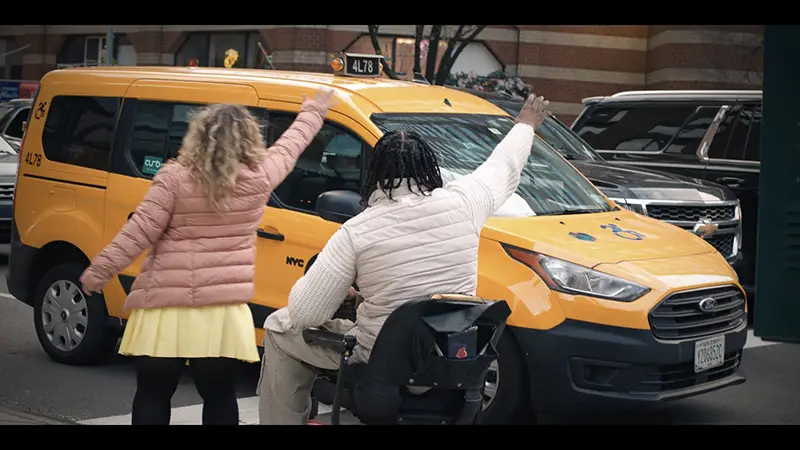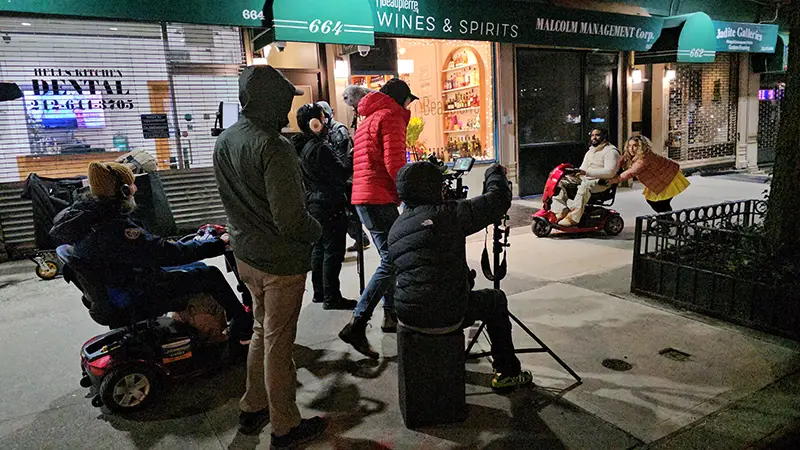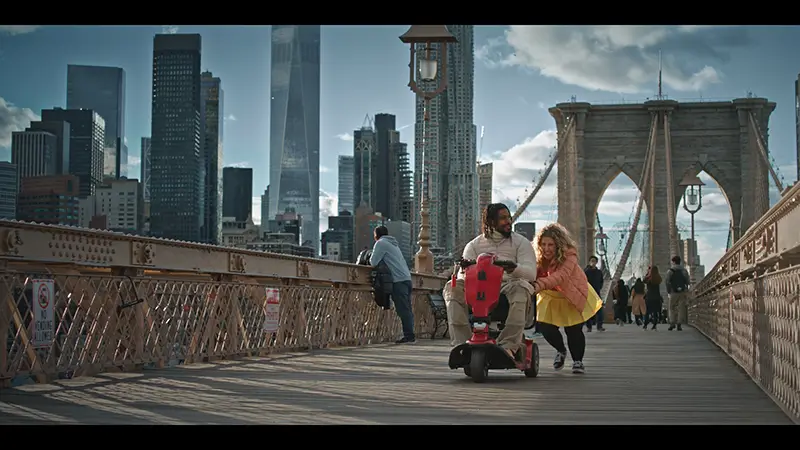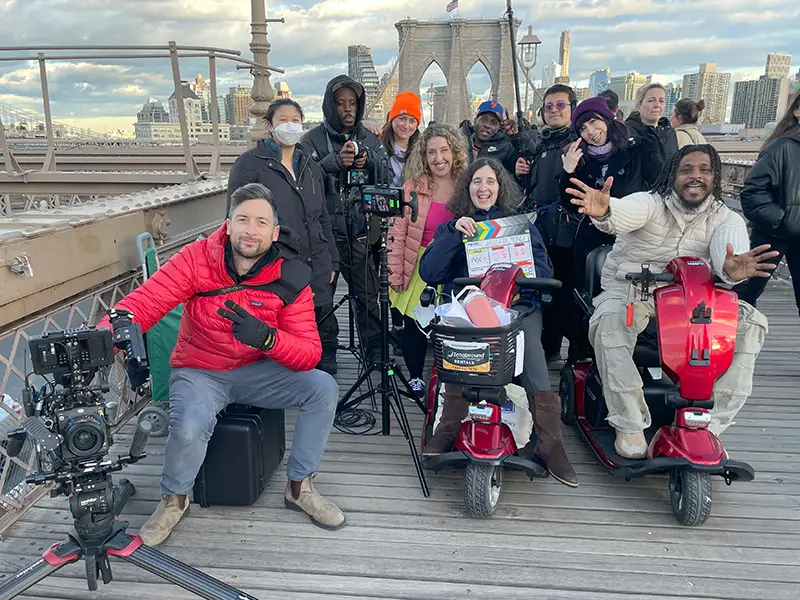A broken elevator. Cabs that won't pick you up. That dreaded screech of tires when a chair randomly decides to stop working. Many of the challenges portrayed on screen in my latest Easterseals Disability Film Challenge (EDFC) five-minute short, "Wheelchair Money," mirror those I've faced in my daily life as a wheelchair user.

Just like Olympic athletes build muscle from the repetition of their craft, people with disabilities are world-class masters at resilience and adaptation. More often than not, we have an ingenuity that comes from having to get around the myriad of obstacles a world that wasn't built with us in mind throws our way.
At the heart of the challenge lies a paradox: the constraints of time and resources, while daunting, become catalysts for innovation. Just as the Olympics demand that athletes exhibit peak performance under pressure, so too does the EDFC push participants to their creative limits, forcing them to transcend limitations and embrace ingenuity. For wheelchair users like myself who accustomed to navigating a world of barriers, this spirit of adaptation is not just second nature but a source of strength – a reminder that the resilience built up through necessity is an asset that can be applied to a great many situations.
Filmmaking, especially the low-budget guerilla-style variety that is bred of the time limit imposed by the film challenge, is an endeavor where the ability to conquer a constant stream of obstacles is a competitive advantage. Participants in the EDFC, all of whom have to be unpaid volunteers per the rules of the challenge, have just five days to do all production and post-production work on a five-minute short film. Each team must include a person with a disability in front of or behind the camera. My team for "Wheelchair Money" had many more: all of our cast members have a disability of some sort and many members of the behind-the-scenes crew have disabilities of their own.

While people with disabilities make up 25% of the population according to the CDC, fewer than 5% of the people appearing on screen have disabilities, which is no surprise considering less than 1% of writers and executives calling the shots on storylines have a disability themselves. Representation is also what encouraged me to give directing a try. Though I have long had a passion for screenwriting, I wasn't sure I'd be able to direct until I met Ben Lewin, director of the Oscar-nominated film "The Sessions," while moderating a panel out in Los Angeles. Lewin, who himself uses wheeled mobility, shared that directing a film is an inherently wheelchair-accessible job because it mainly involves sitting around and telling people what to do. As someone who is perpetually seated and bossy, that was all the encouragement I needed. For wheelchair users like myself who have long been relegated to the role of passive spectators, this opportunity to shape our own narrative is nothing short of revolutionary. Every casting choice and every behind-the-scenes decision is informed by a commitment to authenticity and inclusivity.
"Wheelchair Money" follows the journey of best friends Johnny and Whitney, played by Jessie Chin and Pamela Rae Schuller, as they attempt to secure a much-needed new custom rehab power wheelchair for Johnny in spectacularly comedic fashion. At the start of the film, Johnny gets summarily denied for pre-approval by his health insurance provider. Plan B involves getting enough money to self-fund the chair by traversing New York City to sell Johnny's prized Princess Diana Beanie Baby, which Internet rumor values at as much as $500,000. On their way to find the one toy appraiser who can authenticate the Beanie Baby, Johnny and Whitney encounter a variety of obstacles including a barely functional subway elevator full of an unsavory substance, difficulty hailing an accessible taxi, and distraction in the form of a run-in with the very ex who gave Johnny the Beanie Baby in the first place.
Off-screen, challenges came at us in a constant volley. Just like using a wheelchair means always having an alternate access plan in the back of my mind, having multiple backup options was key to being prepared as a producer-director. We were all set to shoot when a torrential rainstorm rolled through NYC, forcing us to push production back a day and lose a full day of editing time as a result. Then, an unanticipated file compatibility issue meant we couldn't get files to our remote editor, cutting our edit team by half. But not even a minor earthquake could keep us from making our deadline!

Being a wheelchair user also often means asking for help and living in a more interdependent manner as a result. These two things gave me the build-in transferrable skills needed to recruit and manage a strong team. It is due to my amazing team that we were able to overcome every obstacle in front of us and create a professionally shot film.
In the final analysis, "Wheelchair Money" transcends its status as a short film to become a testament to the resilience of the human spirit. It is a reminder that in a world that often seeks to confine us to the margins, our stories are not just worth telling, they are essential. As filmmakers, as wheelchair users, as human beings, we have the power to transform obstacles into opportunities, to defy expectations, and to redefine what it means to be truly, unapologetically, ourselves.

About the Author
Anna Pakman is an award-winning writer, director, and producer. In addition to her passion for filmmaking, Anna is an expert digital marketer and serves as head of digital for New York State's I LOVE NY tourism campaign and business development initiatives. Prior to that, she spent several years in the television industry-leading award-winning social media campaigns for Current TV and Oxygen Network.
Anna received an MBA from Columbia Business School, a bachelor's degree from NYU, and completed the sketch program at the Upright Citizens Brigade Theater in NYC, where she resides.
Most of the stories here on LiveQuickie.com were submitted by readers. Do you have a story to tell? We'd love to hear it. Submit your story here.